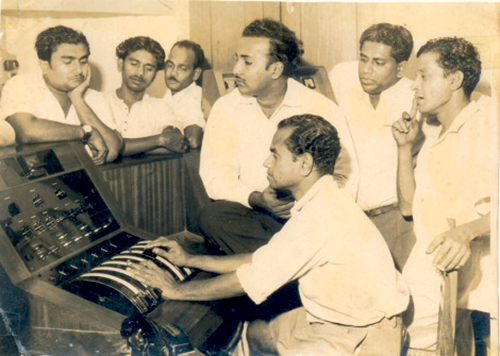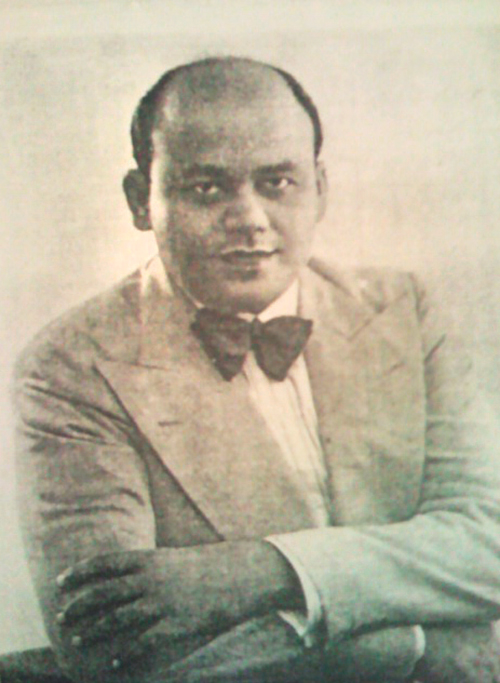Features
The Tamil presence in Sinhala cinema
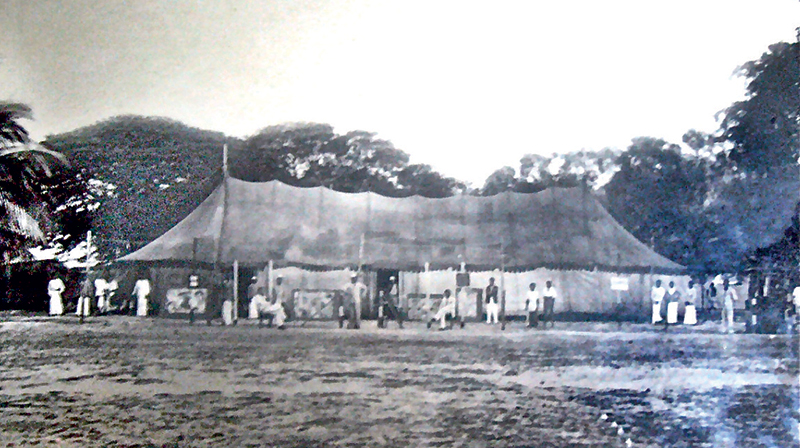
(Excerpted from Shared Encounters in Myanmar, Sri Lanka and Thailand – International Centre for Ethnic Studies 2024)
by Hasini Haputhanthri
An oft-quoted saying of S.W.R.D. Bandaranaike, former premier of Ceylon who came to power in 1956 upon a wave of nationalism goes: “I have never found anything to excite the people in quite the way this language issue does”. The implication was that language was a deeply divisive issue in Ceylon. However, when it came to cinema, at least in the early years, “this language issue” was not a barrier for collaboration.
In the 1930s and the early 40s, before the advent of Sinhala talkies, Tamil films were well liked and received by Sinhala audiences. For example, the South Indian blockbuster, Chintamani (1937) was an instant hit in Ceylon. Colombo-based film critic, Lucian Rajakarunanayake reminisces in the Daily News (1 June 2010):
“The Bioscope, as films were known at the time, was screened in Plaza Cinema Wellawatta. I recall waiting in the long queue with my aunts to whom an evening of watching the bioscope was a very special occasion…Chintamani ran nearly for six months or more in Colombo and it was house full all the while. Businessmen were cashing in on the runaway popularity with the Chintamani name being used for match-boxes, candles and joss-sticks. Many children were given the name too, by parents who must have seen the film several times and were singing and humming the songs…”
Neighbors to Collaborators
The early Sinhala talkies carried a heavy South Indian influence and went on to perform well at the box office. Many directors and producers of Sinhala films were Tamil or South Indian. S.M. Nayagam, the producer of Kadawunu Poronduwa was a Tamil hailing from Madras Presidency (now Madurai). Nayagam was not a stranger to Ceylon. In fact, he was already invested in the island through his business ventures. (Apart from films, Nayagam also made bars of soap!)
Since early production work happened in South Indian studios, Nayagam ferried the whole cast of Kadawunu Poronduwa, Rukmani Devi, the brothers B.A.W. Jayamanne and Eddie Jayamanne, and the Minerva Theatre Group across the strait over to India. The film was directed by Jyotish Singh, a Bengali already working in the Tamil film industry. The music was directed by Narayana Aiyar, a musician of repute from Tamil Nadu.
Gujarati director V.N. Javeri, A.B. Raj who directed six Sinhala films, T.R. Sundaram, L.S. Ramachandran, A.S. Nagarajan of Mathalan fame were all directors of Indian origin who worked on Sinhala talkies. Mathalan ran for 90 days when it was first released in 1955 and for 118 days when it was re-screened in 1973, a record in local cinema. Similar to many other films of the era it was a copy of a Tamil film based on a folktale from Tanjore. It is claimed that a similar folk tale exists in Ceylon as well, pointing to the inextricable cultural common ground between South India and Ceylon. Audiences focused on these cultural ‘connectors’, more than they did on the ‘dividers’, as they embraced the song, dance and high drama. Perhaps it can also be inferred that cinema provided an escape from a divided reality.
Cinema Made by Everyone for Everyone
The contributions of the Muslim community to film, especially film music, is worthy of a movie of its own. Abdul Aziz of Kollupitiya, Mohamad Ghouse of Grandpass, Ismail Rauther of Moor Street, and Lakshmi Bhai, an idol of Nurti theater in the 30s and 40s, all contributed their musical talents. After the decline of Nurti theater, prominent artistes and music directors such as Ghouse Master, Peer Mohamed, Mohideen Baig and Abdul Haq defined and pioneered Sri Lankan music and cinema together with their Sinhala protégées and contemporaries including Amaradeva from the early 1930s to mid-60s.
Muslim musicians and singers, notably Mohamad Sali, Ibrahim Sali, A.J. Karim, M.A. Latif and K.M.A. Zawahir, also contributed significantly to radio broadcasting, serving in the orchestras of the Sri Lanka Broadcasting Corporation (SLBC). Very few are aware of Gnai Seenar Bangsajayah, popularly known as G.S.B. Rani, who is actually of Malay origins hailing from Badulla and gifted the island with unforgettable love songs.
To date, devotional songs such as ‘Buddham Saranam Gachchami’ sung by Mohideen Baig in qawwali style shape the Buddhist imagination and sentiment. Lakshmi Bhai’s ‘Pita Deepa Desha Jayagaththa, Aadi Sinhalun’ evokes a sense of patriotism many can relate to, despite the lyrics specifying the Sinhalese as those who won the world in the past.
The first director of Ceylon Tamil origin was T. Somasekaran whose box office hit Sujatha (1953) brought in a new age in film marketing. Another famous father-and-son duo from Jaffna were W.M.S. Tampoe and Robin Tampoe who directed many famous Sinhala films between them in the 1950s and 1960s. Premnath Moraes, S. Sivanandan and K. Gunaratnam are other pioneering Sri Lankan Tamil contributors to the Sinhala film industry.
One wonders why so many Tamil-speaking producers, directors and composers made films in Sinhala, and not in Tamil. The explanation is simple – the economics of the industry. South India produced a steady line of films in Tamil for the audiences in Ceylon. For Sri Lankan producers and filmmakers at the time, even when they themselves were Tamil-speaking, “this language issue” did not matter. Money was to be made with Sinhala audiences.
Even as individuals, it was easier to transcend ethnic and religious affiliations when it came to cinema. Mohideen Beig, a devout Muslim, was capable of surrendering to Buddha in his songs with utter sincerity. ‘Buddham Saranam Gachchami’, one of his popular devotional songs, is played at Vesak festivals every year: “to Buddha, my only refuge, I surrender”.
As individuals, as communities and as industries, we embraced diversity intuitively and subconsciously. In the 1950s there was a slow reversal of this configuration, where identity politics insidiously began to take over the island, and even seeping into the film industry. As in all other aspects, this spelt doom for the Sri Lankan film. The nationalization of cinema through the establishment of the National Film Corporation in the 1970s, brought in strict government control to an industry that flourished with freedom and creativity. The space for different communities to contribute to the industry shrank steadily.
The Legacy of Love and Hate
The film Asokamala was an early victim of this trend. One could argue that the barrage of shrill film reviews published in the dailies criticizing the film provide early specimens of what is known today as hate speech.
Asokamala (1947) is the Romeo Juliet of the island’s historic love stories. In its essence, the film is an allegory of the island. Produced by a Tamil (Gardiner), directed by a Sinhalese (Shantikumar Seneviratne), the film’s musical score was produced by a Muslim, Mohommed Ghouse, affectionately called Ghouse Master. The film introduced both Mohideen Beig (Muslim) and Amaradeva (Sinhalese) as playback singers. Indian songstress Bhagyarathi stepped in for G.S.B. Rani (Malay), who could not make it to the recordings at Central Studios, Coimbatore India. The film drew the best of Sri Lankan talent, from all its communities and its neighbors.
The theme of the film itself hinted at reconciliation between different communities. Prince Saliya, the son of King Dutugemunu, a celebrated heroic figure from the second century BCE, falls in love with a damsel from a marginal caste. He chooses love over power, and is willing to reconcile with the Tamil chieftains whom his father defeated in a great war, a central albeit controversial event in the island’s history. Released a year before the island gained independence from colonial rulers, the film was almost a prophetic missive highlighting the challenges and opportunities ahead. It went on to earn five times its financial investment and was replete with musical hits known across generations.
- 1962. Sound Recording by Ceylonese crew in South India
- Film pioneer Sir Chittampalam A. Gardiner
However, rising nationalist elements found the film unacceptable. Despite its many plus points, the film was severely criticized in newspapers such as Dinamina, Silumina, Sinhala Baudhdhya, Sinhala Balaya and Sarasavi Sandaresa to name a few.
‘Asokamala is a corruption of history, as it goes against its historical time period and its motherland. It is a story set in the ancient Buddhist capital of Anuradhapura, but nowhere in the film can you see Buddhist stupas, or Buddhist monks. In this film, Dutugemunu is a weak old man,’ a Silumina newspaper editorial (27 April, 1947) lashed out.
‘What we hear about the film currently being shown at the theaters in Colombo is that it hurls abuse and insults at the entire Sinhala race. No Sinhala person would remain silent when the greatest warrior and supreme Sinhala Buddhist ruler is portrayed as a weakling and coward in this film,’
clamored Sarasavi Sandaresa.
In the same editorial, the newspaper urged all Sinhalese Buddhists to boycott the film. In fact, it is amidst this outcry against Asokamala that the idea of establishing a national regulatory body for films was mooted. A love story became a locus of hatred.
This sinister trend for purity and Buddhist supremacy led to many catastrophes over the decades. Communities who once lived in close proximity, who shared neighborhoods and homes and memories became estranged, as seen in the story of Mr Dharmalingam. Cinemas like Rio, owned by minority communities were burnt down in riots.
In reflection, what is most surprising is how powerful stories – positive stories – are repressed through such trends. Today, we remain largely unaware that the first Sinhala film was produced by a Tamil. And hundreds of Sinhala songs were composed by Muslim musicians and sung by Muslims and Malays. We hail Rukamani Devi as the Queen of the Silver Screen, but forget that her real name was Daisy Rasammah Daniel and that she performed in all three languages.
These stories are recorded in black and white, in sound and visual and yet remain unacknowledged, forgotten and dismissed. Nationalism binds people through one story but also blinds people to many other narratives. The early days of Sri Lankan cinema present a host of stories that illustrate confluence. The sheer number of Tamil, Muslim, Bohra, Burgher, Malay, Colombo Chetty communities working together with Sinhalese for the cinematic industry is not just ‘a possibility’ but a reality that already existed. One only needs to read the credits of an old movie, and ask who is who.
These stories are parables on how harmony makes small things grow; and how the lack of it makes great things decay. Cinema created a space for people to not just coexist but collaborate. A sanctuary where people could transcend parochial identities, unleash their creative potential and find their own purpose and place in history. What made cinema a truly modern form of art, is not the technology, but that it brought together this multitude of people, talents, arts, sciences, commerce, and vision in its wake.
Likewise, the opportunity of becoming a modern democratic state lies in proactively focusing and celebrating this diversity and opting for the path of love, collaboration, appreciation and deep understanding as opposed to hate. Coexistence is not a passive state but an active, changing dynamic that requires constant effort.
It is said in the movies that love and hate are two sides of the same coin. Is this really true? Or are they distinctive paths we must choose from, individually and collectively, as we walk into our futures?
Features
US foreign policy-making enters critical phase as fascist threat heightens globally
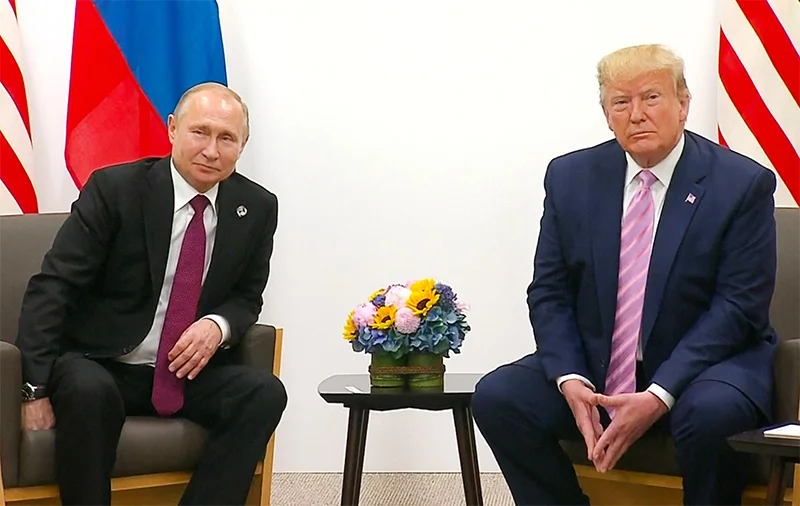
 It could be quite premature to claim that the US has closed ranks completely with the world’s foremost fascist states: Russia, China and North Korea. But there is no denying that the US is breaking with tradition and perceiving commonality of policy orientation with the mentioned authoritarian states of the East rather than with Europe and its major democracies at present.
It could be quite premature to claim that the US has closed ranks completely with the world’s foremost fascist states: Russia, China and North Korea. But there is no denying that the US is breaking with tradition and perceiving commonality of policy orientation with the mentioned authoritarian states of the East rather than with Europe and its major democracies at present.
Increasingly, it is seemingly becoming evident that the common characterization of the US as the ‘world’s mightiest democracy’, could be a gross misnomer. Moreover, the simple fact that the US is refraining from naming Russia as the aggressor in the Russia-Ukraine conflict and its refusal to perceive Ukraine’s sovereignty as having been violated by Russia, proves that US foreign policy is undergoing a substantive overhaul, as it were. In fact, one could not be faulted, given this backdrop, for seeing the US under President Donald Trump as compromising its democratic credentials very substantially.
Yet, it could be far too early to state that in the traditional East-West polarity in world politics, that the US is now squarely and conclusively with the Eastern camp that comprises in the main, China and Russia. At present, the US is adopting an arguably more nuanced approach to foreign policy formulation and the most recent UN Security Council resolution on Ukraine bears this out to a degree. For instance, the UN resolution in question reportedly ‘calls for a rapid end to the war without naming Russia as the aggressor.’
That is, the onus is being placed on only Ukraine to facilitate an end to the war, whereas Russia too has an obligation to do likewise. But it is plain that the US is reflecting an eagerness in such pronouncements to see an end to the Ukraine conflict. It is clearly not for a prolongation of the wasting war. It could be argued that a negotiated settlement is being given a try, despite current international polarizations.
However, the US could act constructively in the crisis by urging Russia as well to ensure an end to the conflict, now that there is some seemingly friendly rapport between Trump and Putin.
However, more fundamentally, if the US does not see Ukraine’s sovereignty as having been violated by Russia as a result of the latter’s invasion, we are having a situation wherein the fundamental tenets of International Law are going unrecognized by the US. That is, international disorder and lawlessness are being winked at by the US.
It follows that, right now, the US is in cahoots with those powers that are acting autocratically and arbitrarily in international politics rather than with the most democratically vibrant states of the West, although a facile lumping together of the US, Russia and China, is yet not possible.
It is primarily up to the US voting public to take clear cognizance of these developments, draw the necessary inferences and to act on them. Right now, nothing substantive could be done by the US voter to put things right, so to speak, since mid-term US elections are due only next year. But there is ample time for the voting public to put the correct perspective on these fast-breaking developments, internationally and domestically, and to put their vote to good use in upcoming polls and such like democratic exercises. They would be acting in the interest of democracy worldwide by doing so.
More specifically it is up to Donald Trump’s Republican voter base to see the damage that is being done by the present administration to the US’ standing as the ‘world’s mightiest democracy’. They need to bring pressure on Trump and his ‘inner cabinet’ to change course and restore the reputation of their country as the foremost democracy. In the absence of such action it is the US citizenry that would face the consequences of Trump’s policy indiscretions.
Meanwhile, the political Opposition in the US too needs to get its act together, so to speak, and pressure the Trump administration into doing what is needed to get the US back to the relevant policy track. Needless to say, the Democratic Party would need to lead from the front in these efforts.
While, in the foreign policy field the US under President Trump could be said to be acting with a degree of ambivalence and ambiguity currently, in the area of domestic policy it is making it all to plain that it intends to traverse a fascistic course. As has been proved over the past two months, white supremacy is being made the cardinal principle of domestic governance.
Trump has made it clear, for example, that his administration would be close to ethnic chauvinists, such as the controversial Ku Klux Klan, and religious extremists. By unceremoniously rolling back the ‘diversity programs’ that have hitherto helped define the political culture of the US, the Trump administration is making no bones of the fact that ethnic reconciliation would not be among the government’s priorities. The steady undermining of USAID and its main programs worldwide is sufficient proof of this. Thus the basis has been adequately established for the flourishing of fascism and authoritarianism.
Yet, the US currently reflects a complex awareness of foreign policy questions despite having the international community wondering whether it is sealing a permanent alliance with the main powers of the East. For instance, President Trump is currently in conversation on matters in the external relations sphere that are proving vital with the West’s principal leaders. For example, he has spoken to President Emmanuel Macron of France and is due to meet Prime Minister Keir Starmer of the UK.
Obviously, the US is aware that it cannot ‘go it alone’ in resolving currently outstanding issues in external relations, such as the Ukraine question. There is a clear recognition that the latter and many more issues require a collaborative approach.
Besides, the Trump administration realizes that it cannot pose as a ‘first among equals’, given the complexities at ground level. It sees that given the collective strength of the rest of the West that a joint approach to problem solving cannot be avoided. This is particularly so in the case of Ukraine.
The most major powers of the West are no ‘pushovers’ and Germany, under a possibly Christian Democratic Union-led alliance in the future, has indicated as much. It has already implied that it would not be playing second fiddle to the US. Accordingly, the US is likely to steer clear of simplistic thinking in the formulation of foreign policy, going forward.
Features
Clean Sri Lanka – hiccups and remedies
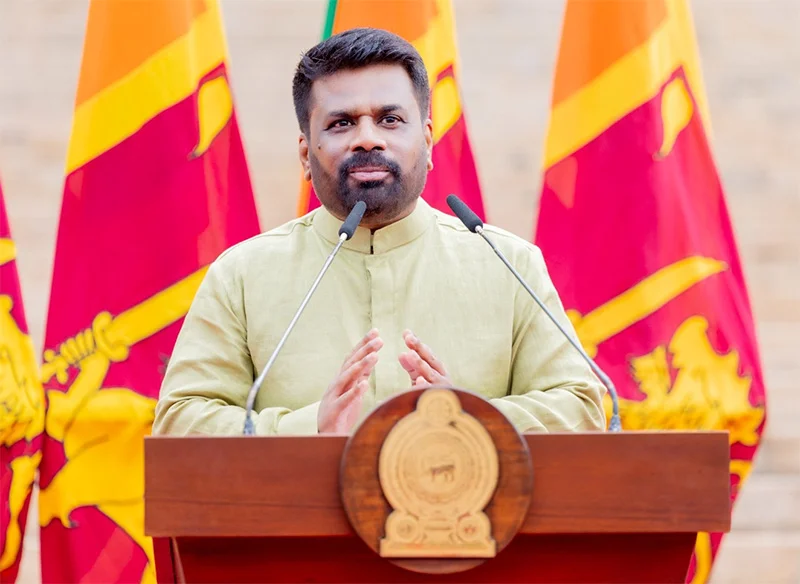
by Upali Gamakumara,
Upali.gamakumara@gmail.com
The Clean Sri Lanka (CSL) is a project for the true renaissance the NPP government launched, the success of which would gain world recognition. It is about more than just cleaning up places. Its broader objectives are to make places attractive and happy for people who visit or use services in the country, focusing more on the services in public institutions and organisations like the SLTB. Unfortunately, these broader objectives are not apparent in its theme, “Clean Sri Lanka,” and therefore there is a misconception that keeping the environment clean is the main focus.
People who realise the said broader objectives are excited about a cleaner Sri Lanka, hoping the President and the government will tackle this, the way they are planning to solve other big problems like the economy and poverty. However, they do not see themselves as part of the solution.
From the management perspective, the CSL has a strategic plan that is not declared in that manner. When looking at the government policies, one can perceive its presence, the vision being “A Prosperous Nation and a Beautiful Life,” the mission “Clean Sri Lanka” and the broader objectives “a disciplined society, effective services, and a cleaner environment.” If the government published these as the strategy, there would have been a better understanding.
Retaining the spirit and expectations and continuing the ‘Clean Sri Lanka’ project is equally important as much as understanding its deep idea. For this, it needs to motivate people, which differs from those motivators that people push to achieve selfish targets. The motivation we need here is to evolve something involuntarily, known as Drivers. Drivers push for the survival of the evolution or development of any entity. We see the absence of apparent Drivers in the CSL project as a weakness that leads to sporadic hiccups and free flow.
Drivers of Evolution
Drivers vary according to the nature of envisaged evolution for progress. However, we suggest that ‘the force that pushes anything to evolve’ would fit all evolutions. Some examples are: ‘Fitting to survival’ was the driver of the evolution of life. Magnetism is a driver for the unprecedented development of physics – young Einstein was driven to enquire about the ‘attraction’ of magnets, eventually making him the greatest scientist of the 20th century.
Leadership is a Driver. It is essential but do not push an evolution continually as they are not sprung within a system involuntarily. This is one of the reasons why CSL has lost the vigour it had at its inception.
CSL is a teamwork. It needs ‘Drives’ for cohesion and to push forward continually, like the Quality Improvement Project of the National Health Service (NHS) in England. Their drivers are outlined differently keeping Aims as their top driver and saying: Aims should be specific and measurable, not merely to “improve” or “reduce,” engage stakeholders to define the aim of the improvement project and a clear aim to identify outcome measures.
So, we think that CSL needs Aims as defined by NHS, built by stakeholder participation to help refine the project for continuous evolution. This approach is similar to Deming’s Cycle for continual improvement. Further, two more important drivers are needed for the CSL project. That is Attitudinal Change and Punishment. We shall discuss these in detail under Psychoactive Environment (pSE) below.
Aside from the above, Competition is another driver in the business world. This helps achieve CSL objectives in the private sector. We can see how this Driver pushes, with the spread of the Supermarket chains, the evolution of small and medium retail shops to supermarket level, and in the private banks and hospitals, achieving broader objectives of CSL; a cleaner environment, disciplined behaviuor, efficient service, and the instillation of ethics.
The readers can now understand the importance of Drivers pushing any project.
Three Types of Entities and Their Drives
We understand, that to do the transformation that CSL expects, we need to identify or adopt the drivers separately to suit the three types of entities we have in the country.
Type I entities are the independent entities that struggle for their existence and force them to adopt drivers involuntarily. They are private sector entities, and their drivers are the commitment of leadership and competition. These drivers spring up involuntarily within the entity.
Type II are the dependent entities. To spring up drivers of these entities commitment of an appointed trustee is a must. Mostly in state-owned entities, categorized as Boards, Authorities, Cooperations, and the like. Their drivers do not spring up within or involuntarily unless the leader initiates. The Government of a country also falls into this type and the emergence of drivers depends on the leader.
Type III entities have neither independent nor dependent immediate leader or trustee. They are mostly the so-called ‘Public’ places like public-toilets, public-playgrounds, and public-beaches. No team can be formed as these places are open to any, like no-man-land. Achieving CSL objectives at these entities depends on the discipline of the public or the users.
Clean Sri Lanka suffers the absence of drivers in the second and third types of entities, as the appointed persons are not trustees but temporary custodians.
The writer proposes a remedy to the last two types of entities based on the theory of pSE explained below.
Psychoactive Environment (pSE) –
The Power of Customer Attraction
Research by the writer introduced the Psychoactive Environment (pSE) concept to explain why some businesses attract more customers than others who provide the same service. Presented at the 5th Global Conference on Business and Economics at Cambridge University in 2006, the study revealed that a “vibe” influences customer attraction. This vibe, termed pSE, depends on Three Distinct Elements, which can either attract or repel customers. A positive pSE makes a business more attractive and welcoming. This concept can help develop Drivers for Type II and III entities.
pSE is not an all-inclusive solution for CSL, but it lays the foundation for building Drivers and motivating entities to keep entrants attractive and contented.
The structure of the pSE
The three distinct Elements are the Occupants, Systems, and Environment responsible for making a pSE attractive to any entity, be it a person, institution, organization, or county. Each of these elements bears three qualities named Captivators. These captivators are, in simple terms, Intelligent, Nice, and Active in their adjective forms.
pSE theorizes that if any element fails to captivate the entrant’s mood by not being Intelligent, Nice, or Active, the pSE becomes negative, repelling the entrant (customer). Conversely, the positive pSE attracts the entrants if the elements are Intelligent, Nice, and Active.
For example, think person who comes to a Government Office for some service. He sees that the employees, service, and environment are intelligent, nice, and active, and he will be delighted and contented. He will not get frustrated or have any deterioration in national productivity.
The Significance of pSE in CSL
The Elements and the Captivators are universal for any entity. Any entity can easily find its path to Evolution or Progress determined by these elements and captivators. The intangible broader objectives can be downsised to manageable targets by pSE. Achievements of these targets make the entrants happy and enhance productivity – the expectation of Clean Sri Lanka (CSL).
From the perspective of pSE, now we can redefine the Clean Sri Lanka project thus:
To make the Elements of every entity in Sri Lanka: intelligent, Nice, and Active.
How Would the pSE be A Remedy for The Sporadic Hiccups?
We have seen two possible reasons for sporadic setbacks and the discontinuity of some projects launched by the CSL. They are:
The absence of involuntary Drivers for evolvement or progress
Poor attitudes and behaviors of people and leaders
Remedy for the Absence of Drivers
Setting up a system to measure customer or beneficiary satisfaction, and setting aims can build Drivers. The East London NHS principles help build the Aims that drive type II & II entities. The system must be designed to ensure continual improvement following the Deming Cycle. This strategy will create Drivers for Type I & II entities.
This process is too long to explain here therefore we refrain from detailing.
Attitudinal Change
The most difficult task is the attitudinal and behavioural change. Yet it cannot be postponed.
Punishment as a strategy
In developed countries, we see that people are much more disciplined than in the developing countries. We in developing countries, give credit to their superior culture, mitigating ours as rudimental. The long experience and looking at this affair from a vantage point, one will understand it is not the absolute truth. Their ruthless wars in the past, rules, and severe punishment are the reasons behind this discipline. For example, anyone who fails to wear a car seatbelt properly will be fined 400 AUD, nearly 80,000 LKR!
The lesson we can learn is, that in Sri Lanka, we need strong laws and strict punishment together with a type of strategic education as follows.
Psychological Approach as a Strategy
The psychological theory of attitude formation can be used successfully if some good programmes can be designed.
All attitude formations start with life experience. Formed wrong or negative attitudes can be reversed or instilled with correct attitudes by exposure to designed life experiences. The programmes have been developed using the concepts of Hoshin Kanri, Brainstorming, Cause-and-Effect analysis, and Teamwork, in addition to London NTS Quality Improvement strategies.
The experience and good responses we received for our pSE programs conducted at several institutions prove and have built confidence in our approach. However, it was a time, when governments or organisations did not pay much attention to cultural change as CSL expects in the country.
Therefore, we believe this is a golden opportunity to take the CSL supported by the pSE concept.
Features
Visually impaired but ready to do it their way
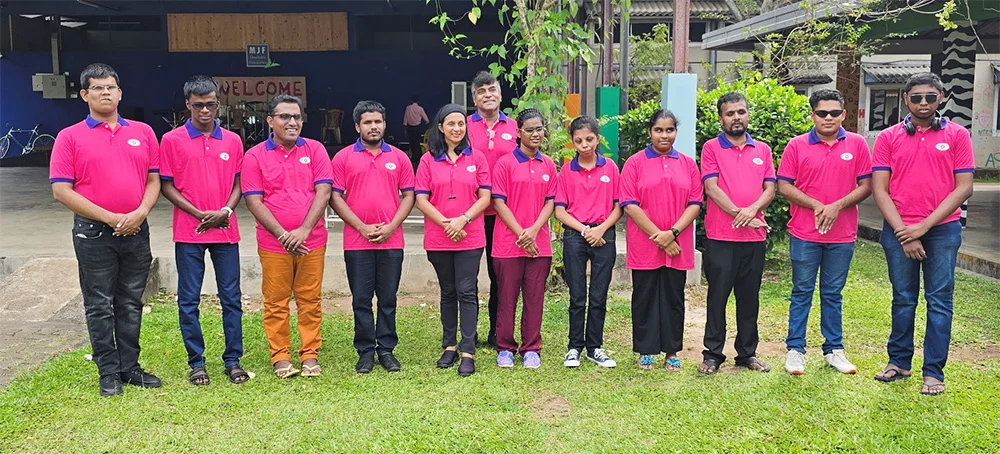
 Although they are visually impaired youngsters, under the guidance of renowned musician Melantha Perera, these talented individuals do shine bright … hence the name Bright Light.
Although they are visually impaired youngsters, under the guidance of renowned musician Melantha Perera, these talented individuals do shine bright … hence the name Bright Light.
Says Melantha: “My primary mission is to nurture their talent and ensure their sustainable growth in music, and I’m thrilled to announce that Bright Light’s first public performance is scheduled for 7th June, 2025. The venue will be the MJF Centre Auditorium in Katubadda, Moratuwa.”
Melantha went on to say that two years of teaching, online, visually impaired youngsters, from various parts of the island, wasn’t an easy ride.
There were many ups and downs but Melantha’s determination has paid off with the forming of Bright Light, and now they are gearing up to go on stage.
According to Melantha, they have come a long way in music.
“For the past few months, we have been meeting, physically, where I guide them to play as a band and now they show a very keen interest as they are getting to the depth of it. They were not exposed to English songs, but I’ve added a few English songs to widen their repertoire.
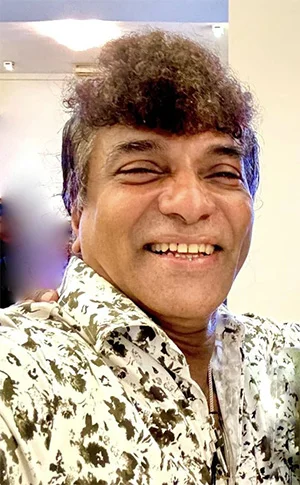
Melantha Perera: Invented a notation
system for the guitar
“On 7th June, we are opening up for the public to come and witness their talents, and I want to take this product island-wide, giving the message that we can do it, and I’m hoping to create a database so there will be a following. Initially, we would like your support by attending the show.”
Melantha says he didn’t know what he was getting into but he had confidence teaching anyone music since he has been in the scene for the past 45 years. He began teaching in 2015,
“When I opened my music school, Riversheen School of Music, the most challenging part of teaching was correcting tone deaf which is the theoretical term for those who can’t pitch a note, and also teaching students to keep timing while they sang and played.”
Melantha has even invented a notation system for the guitar which he has named ‘MelaNota’. He has received copyrights from the USA and ISO from Australia, but is yet to be recognised in Sri Lanka.
During Covid-19, Melantha showcased MelaNota online and then it was officially launched with the late Desmond De Silva playing one of his tunes, using MelaNota.
Melantha says that anyone, including the visually impaired, can play a simple melody on a guitar, within five minutes, using his notation system.
“I’ve completed the system and I’m now finalising the syllabus for the notation system.”
Melantha has written not only for the guitar, but also for drums, keyboards, and wind instruments.
For any queries, or additional information, you could contact Melantha at 071 454 4092 or via email at thebandbrightlight@gmail.com.
-

 Business3 days ago
Business3 days agoSri Lanka’s 1st Culinary Studio opened by The Hungryislander
-

 Sports4 days ago
Sports4 days agoHow Sri Lanka fumbled their Champions Trophy spot
-

 News6 days ago
News6 days agoKiller made three overseas calls while fleeing
-
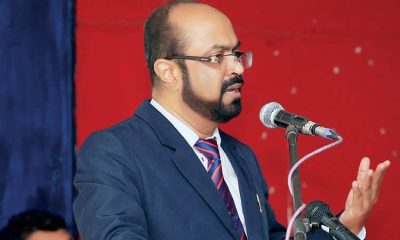
 News5 days ago
News5 days agoSC notices Power Minister and several others over FR petition alleging govt. set to incur loss exceeding Rs 3bn due to irregular tender
-
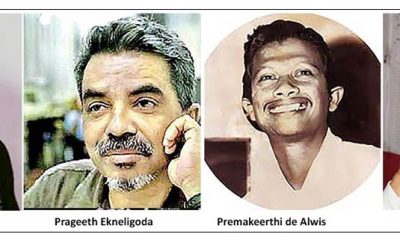
 Features4 days ago
Features4 days agoThe Murder of a Journalist
-
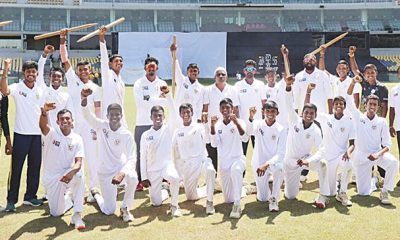
 Sports4 days ago
Sports4 days agoMahinda earn long awaited Tier ‘A’ promotion
-
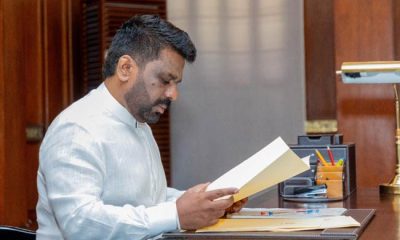
 Features4 days ago
Features4 days agoExcellent Budget by AKD, NPP Inexperience is the Government’s Enemy
-

 News5 days ago
News5 days agoMobile number portability to be introduced in June

